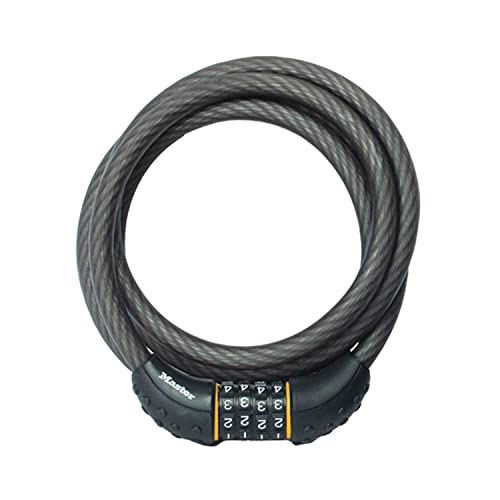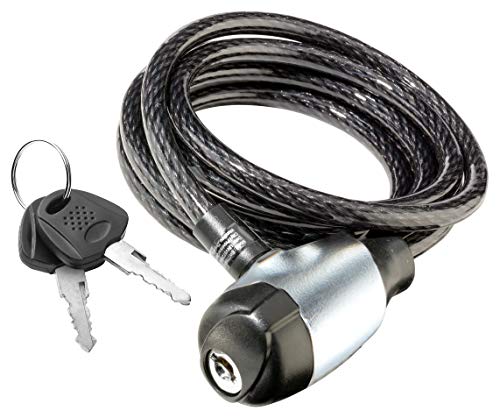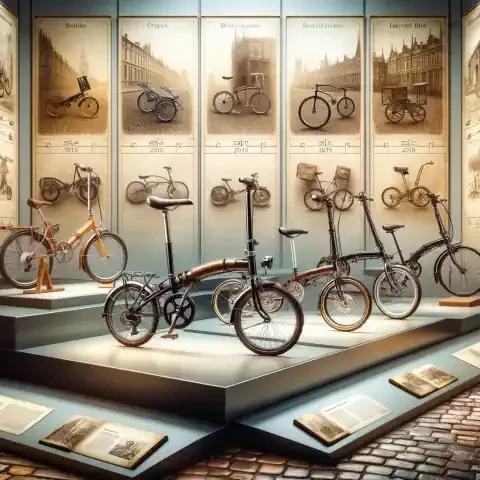Introduction
Bicycles are more than just a means of transportation; they're a source of freedom, adventure, and exercise. Whether you use your bike for commuting, leisurely rides, or intense workouts, one thing remains paramount: keeping your bike safe and secure when not in use. Proper bicycle storage is essential for protecting your investment, preventing theft, and prolonging the lifespan of your bike.
In this comprehensive guide, we'll delve into the world of bicycle storage solutions, exploring various methods and strategies to help you safeguard your bike and keep it in top condition. From indoor storage options to outdoor solutions, we'll cover everything you need to know to ensure your bike remains safe and secure.
The Importance of Proper Bicycle Storage
Why is proper bicycle storage so crucial? Beyond the obvious benefits of preventing theft and damage, effective storage also helps preserve the integrity of your bike's components and frame. Exposure to the elements, such as rain, snow, and UV rays, can accelerate wear and corrosion, leading to costly repairs or premature replacement.
Moreover, inadequate storage can make your bike vulnerable to theft, particularly in urban areas where bike theft is rampant. By implementing secure storage solutions, you can deter thieves and protect your bike from being stolen or tampered with.
Preview of Key Sections
In the sections that follow, we'll delve into various aspects of bicycle storage, starting with an assessment of your storage needs. We'll discuss factors to consider when determining the most suitable storage solutions for your situation, whether you live in a cramped apartment or spacious house.
Next, we'll explore indoor storage options, including wall-mounted racks, ceiling hooks, and floor stands, ideal for maximizing space efficiency in your home or garage. We'll also cover outdoor storage solutions such as bike sheds, lockable storage boxes, and bike covers, designed to withstand the elements and keep your bike safe outdoors.
Securing your bike is paramount, so we'll provide tips on selecting high-quality locks and securing your bike both indoors and outdoors. Additionally, we'll discuss the importance of choosing the right location for bike storage.
For those seeking custom solutions or community storage options, we'll explore DIY storage ideas and community bike storage programs, highlighting the benefits of communal storage for urban dwellers and cyclists with limited space.
In conclusion, we'll summarize key takeaways and emphasize the importance of implementing proper bicycle storage solutions to protect your bike investment and enjoy worry-free rides for years to come. So let's dive in and discover how to keep your bike safe and secure!
Assessing Your Storage Needs
Before diving into the plethora of bicycle storage solutions available, it's crucial to take a step back and assess your unique storage needs. Understanding your requirements and constraints will guide you towards selecting the most appropriate storage solutions that align with your lifestyle and space limitations.
Factors to Consider When Determining Storage Requirements
Several factors come into play when determining your bicycle storage needs. Firstly, consider the size of your living space. Are you living in a compact apartment with limited floor space, or do you have a spacious garage or backyard at your disposal? The available space will influence the type of storage solutions you can consider.
Secondly, take into account the type of bicycle or bicycles you own. Are you a casual cyclist with a single bike, or do you have a collection of road bikes, mountain bikes, and commuter bikes? Different types of bicycles may require different storage solutions based on their size, weight, and shape.
Lastly, consider how frequently you use your bike and the ease of access you require. If you use your bike for daily commuting, you'll want a storage solution that allows for quick and convenient access. Conversely, if you use your bike less frequently for leisurely rides, you may prioritize storage solutions that maximize space efficiency.
Importance of Assessing Available Storage Options
Once you've identified your storage requirements, it's time to assess the available storage options in your home or community. Look around your living space and identify potential storage areas, such as garages, basements, spare rooms, balconies, or outdoor sheds.
Evaluate each storage space based on factors such as accessibility, convenience, security, and protection from the elements. For instance, storing your bike in a damp basement may increase the risk of rust and corrosion, while keeping it in a locked garage provides greater security.
Consider the layout of your home and how you can optimize existing storage spaces or repurpose unused areas for bicycle storage. Additionally, explore community storage options such as bike-sharing programs, public bike racks, or bike lockers, especially if you live in an urban area with limited space.
By thoroughly assessing your storage needs and available options, you can make informed decisions about how to best protect your bike and optimize your storage space. This proactive approach sets the foundation for implementing effective bicycle storage solutions that meet your needs and ensure the safety and security of your bike.
Securing Your Bike
$11.99
4.77 out of 5 starsSchwinn Bike Lock, Anti Theft, Keyed, 6ft
Secure Your Cycling Investment with a Schwinn Anti-Theft Bike Lock
Product information
Product Review Score
Product links
Ensuring the security of your bike is paramount, whether it's stored indoors or outdoors. In this section, we'll explore various strategies and best practices for securing your bike to prevent theft and unauthorized access.
Tips on Selecting High-Quality Locks
Investing in a high-quality bike lock is essential for deterring thieves and protecting your bike from theft. Consider the following tips when selecting a bike lock:
Choose a Durable Material: Look for locks made from hardened steel or alloy, which are resistant to cutting, sawing, and prying attacks.
Opt for a Secure Locking Mechanism: Choose a lock with a reliable locking mechanism, such as a disc detainer, pin tumbler, or cylinder lock, that is difficult to pick or tamper with.
Consider Lock Type: Decide between U-locks, chain locks, cable locks, or folding locks based on your storage needs and security requirements. U-locks are typically the most secure option, while cable locks offer flexibility but may be more vulnerable to cutting.
Check Security Ratings: Look for locks that meet industry standards for security ratings, such as Sold Secure, ART, or Thatcham, to ensure they provide adequate protection against theft.
Securing Your Bike Indoors
When storing your bike indoors, it's essential to use a secure locking system to prevent unauthorized access. Follow these tips to secure your bike effectively:
Anchor Your Bike: Secure your bike to a fixed object such as a wall-mounted rack, sturdy furniture, or a ground anchor using a high-quality lock. Make sure the anchor point is strong and immovable to prevent theft.
Lock Both Wheels and Frame: Use the lock to secure both wheels and the frame of your bike to the anchor point, ensuring maximum security. Consider using a secondary lock for additional protection, especially for high-value bikes.
Choose a Visible Location: Place your bike in a visible and well-lit area within your home or garage to deter thieves. Avoid hiding your bike away in a secluded corner where it may be more vulnerable to theft.
Securing Your Bike Outdoors
When storing your bike outdoors, it's crucial to take extra precautions to protect it from theft and the elements. Follow these tips to secure your bike effectively:
Use a Weatherproof Cover: Invest in a durable, weatherproof cover to protect your bike from rain, snow, and UV exposure when stored outdoors. Make sure the cover fits snugly over your bike and is secured to prevent it from blowing away in strong winds.
Lock Your Bike to a Fixed Object: Use a sturdy bike rack, ground anchor, or immovable object to secure your bike outdoors. Avoid locking your bike to flimsy structures or objects that can be easily cut or removed.
Position Your Bike Strategically: Place your bike in a well-trafficked area with high visibility to deter thieves. Avoid leaving your bike unattended in secluded or poorly lit areas where it may be more vulnerable to theft.
By following these tips and best practices for securing your bike, you can reduce the risk of theft and protect your investment. Remember to use high-quality locks and secure your bike to fixed objects both indoors and outdoors to ensure its safety and security.
Location Considerations
Selecting the right location for storing your bike is crucial for ensuring easy access, convenience, and security. In this section, we'll discuss factors to consider when choosing the ideal storage spot for your bike, whether indoors or outdoors.
Assessing Accessibility and Convenience
When determining the location for storing your bike, accessibility and convenience are key considerations. Choose a storage spot that allows for easy access whenever you need to retrieve or store your bike. Consider the following factors:
Frequency of Use: If you use your bike daily for commuting or errands, opt for a storage location that offers quick and convenient access. Avoid storing your bike in hard-to-reach or obstructed areas that require extra effort to retrieve.
Proximity to Entry Points: Position your bike near entry points such as doors or gates for easy ingress and egress. This allows you to conveniently grab your bike on your way in or out without having to navigate through obstacles or clutter.
Accessibility for Maintenance: Select a location that provides ample space for bike maintenance tasks such as cleaning, lubricating, or repairing. Ensure there is enough room to maneuver around your bike comfortably and access essential tools and equipment.
Ensuring Security and Protection
In addition to accessibility and convenience, security and protection are paramount when choosing a storage location for your bike. Protect your bike from theft, damage, and the elements by considering the following factors:
Security Features: Opt for storage locations equipped with security features such as sturdy locks, surveillance cameras, or alarm systems. Choose well-lit areas with high visibility to deter thieves and minimize the risk of theft.
Protection from the Elements: Select storage spots that offer protection from rain, snow, sunlight, and other weather elements. Avoid exposing your bike to prolonged exposure to harsh weather conditions, which can accelerate wear and corrosion.
Stability and Durability: Ensure that the storage location provides a stable and durable foundation for securing your bike. Avoid flimsy structures or surfaces that may collapse or deteriorate over time, compromising the safety and security of your bike.
Considering Space Constraints
Lastly, consider any space constraints or limitations that may influence your choice of storage location. Whether you live in a small apartment or a spacious house, adapt your storage solutions to maximize available space while meeting your storage needs. Consider the following tips:
Utilize Vertical Space: Make use of wall-mounted racks, ceiling hooks, or vertical storage solutions to maximize floor space and keep your bike out of the way. Vertical storage options are ideal for small living spaces with limited floor space.
Optimize Unused Areas: Repurpose unused areas such as closets, alcoves, or under-stair storage spaces for bike storage. Get creative and think outside the box to find innovative storage solutions that make the most of available space.
Consider Modular or Portable Options: Explore modular or portable storage solutions that can be easily adjusted or moved to accommodate changing storage needs. Look for collapsible racks, foldable stands, or modular shelving systems that offer versatility and flexibility.
By considering accessibility, security, protection, and space constraints, you can select the ideal location for storing your bike that meets your needs and ensures its safety and security. Evaluate various storage spots within your home or property and choose the option that best suits your lifestyle and preferences.
Custom Storage Solutions
Sometimes, standard storage solutions may not fully meet your needs or space constraints. In this section, we'll explore creative DIY and custom storage ideas to help you maximize space efficiency and tailor your storage solutions to fit your unique requirements.
DIY Storage Solutions
DIY storage solutions offer a cost-effective and customizable way to store your bike while making the most of available space. Consider the following DIY storage ideas:
Pallet Bike Rack: Repurpose wooden pallets to create a simple yet functional bike rack. Secure the pallets to a wall or ceiling and add hooks or brackets to hold your bike securely in place.
Pulley System: Install a pulley system in your garage or storage area to hoist your bike up and out of the way when not in use. This space-saving solution is ideal for garages with limited floor space.
Vertical Bike Storage: Build a vertical bike storage rack using PVC pipes or wooden dowels to hold multiple bikes vertically against a wall. This DIY rack is perfect for apartments or small spaces where floor space is limited.
Custom Storage Racks
If you have specific storage requirements or space limitations, consider investing in custom storage racks designed to fit your needs. Work with a carpenter or metalworker to create custom racks tailored to your space and preferences.
Built-In Storage: Incorporate built-in bike storage into existing cabinetry, shelving, or furniture to seamlessly blend storage solutions with your home decor. Custom-built storage solutions can be designed to fit snugly into alcoves, closets, or under-stair spaces.
Foldable Wall Racks: Install foldable wall racks that can be folded flat against the wall when not in use to save space. These versatile racks are perfect for garages, sheds, or outdoor spaces where space is at a premium.
Modular Storage Systems: Invest in modular storage systems that allow you to mix and match components to create custom storage solutions tailored to your space and storage needs. Modular systems offer flexibility and adaptability, allowing you to reconfigure your storage setup as needed.
Repurposed Storage Solutions
Get creative and repurpose everyday items to create unique storage solutions for your bike. Look for unused or underutilized items around your home or garage that can be repurposed to store your bike in a functional and space-saving manner.
Old Furniture: Repurpose old furniture such as bookshelves, dressers, or cabinets to store your bike indoors. Remove shelves or drawers to create open storage space for your bike while maintaining the aesthetic appeal of the furniture piece.
Hanging Hooks: Install sturdy hooks or brackets on walls or ceilings to hang your bike vertically or horizontally. Use hooks with rubber or foam padding to protect your bike's frame from scratches or damage.
Bungee Cord Storage: Use bungee cords or elastic straps to secure your bike to walls, ceilings, or other surfaces. This simple and inexpensive storage solution is perfect for renters or those looking for a temporary storage option.
By exploring DIY, custom, and repurposed storage solutions, you can maximize space efficiency and create storage solutions that meet your specific needs and preferences. Get creative and think outside the box to find innovative ways to store your bike while optimizing available space in your home or garage.
Community Storage Options
For individuals living in urban areas or communal living arrangements, traditional storage solutions may not always be feasible. In this section, we'll explore community storage options that provide convenient and secure storage solutions for cyclists with limited space or security concerns.
Bike-Sharing Programs
Bike-sharing programs offer a convenient and cost-effective solution for individuals who don't have space to store their own bikes or for those who prefer the flexibility of using a bike on-demand. These programs typically provide access to a fleet of shared bikes stationed at designated locations throughout a city or community.
Membership-Based Systems: Join a bike-sharing program by purchasing a membership or subscribing to a service that provides access to bikes at various locations. Members can unlock bikes using a smartphone app or membership card and return them to designated docking stations after use.
Short-Term Rentals: Some bike-sharing programs offer short-term rental options for tourists or occasional cyclists who only need a bike for a limited period. Rent bikes by the hour, day, or week and return them to any designated drop-off location when finished.
Public Bike Racks
Public bike racks provide a convenient and secure storage solution for cyclists to park their bikes when out and about in the city. These racks are typically installed in public spaces such as parks, sidewalks, transit stations, and commercial areas, allowing cyclists to safely lock their bikes while running errands or visiting local attractions.
Design and Accessibility: Public bike racks come in various designs, including inverted U-shaped racks, wave-style racks, and vertical racks. Choose racks that offer multiple locking points and secure attachment to prevent theft and damage to bikes.
Location and Visibility: Look for bike racks located in well-lit, high-traffic areas with good visibility to deter theft and provide a sense of security for cyclists. Avoid racks located in secluded or poorly lit areas where bikes may be more vulnerable to theft or vandalism.
Bike Lockers
Bike lockers offer secure, weatherproof storage solutions for cyclists who need long-term storage or additional security for their bikes. These lockers are typically installed in transit stations, apartment buildings, workplaces, and other communal areas, providing a dedicated space for storing bikes safely and securely.
Individual Storage Units: Bike lockers are individual storage units that provide protection from theft, vandalism, and the elements. Each locker is equipped with a locking mechanism or padlock to ensure only the owner has access to their bike.
Long-Term Storage: Bike lockers are ideal for cyclists who need long-term storage solutions for their bikes, such as commuters who bike to work or residents of apartment buildings without dedicated bike storage facilities.
By taking advantage of community storage options such as bike-sharing programs, public bike racks, and bike lockers, cyclists can enjoy convenient and secure storage solutions without the need for dedicated storage space at home. These communal storage options provide flexibility, accessibility, and peace of mind for cyclists living in urban areas or communal living arrangements.
Conclusion
After exploring various bicycle storage solutions, it's evident that keeping your bike safe and secure is achievable with the right approach and considerations. Let's recap the key takeaways from this guide and emphasize the importance of implementing proper storage solutions for your bike.
Summary of Key Takeaways
Assess Your Storage Needs: Consider factors such as living space, bike type, and frequency of use to determine the most suitable storage solutions for your situation.
Explore Indoor and Outdoor Options: From wall-mounted racks to bike sheds, there are numerous indoor and outdoor storage solutions available to accommodate different needs and preferences.
Prioritize Security: Invest in high-quality locks and secure storage locations to deter theft and protect your bike from unauthorized access.
Consider Location and Accessibility: Choose storage spots that offer easy access, convenience, and protection from the elements to ensure your bike stays in top condition.
Implement Regular Maintenance: Keep your bike clean, lubricated, and well-maintained to prolong its lifespan and optimize performance.
Get Creative with Custom Solutions: Explore DIY, custom, and repurposed storage ideas to maximize space efficiency and tailor storage solutions to fit your unique requirements.
Utilize Community Storage Options: Take advantage of bike-sharing programs, public bike racks, and bike lockers for convenient and secure storage solutions in urban or communal living environments.
Importance of Proper Bicycle Storage
Proper bicycle storage is essential for protecting your investment, preventing theft, and ensuring the longevity and performance of your bike. By implementing effective storage solutions and following maintenance best practices, you can enjoy worry-free rides and peace of mind knowing that your bike is safe and secure.
Final Thoughts
As cycling continues to grow in popularity as a mode of transportation, recreation, and exercise, the importance of proper bicycle storage cannot be overstated. Whether you're a casual rider, daily commuter, or avid cyclist, taking care of your bike is key to maximizing enjoyment and minimizing maintenance issues.
Remember to assess your storage needs, select suitable storage solutions, prioritize security, and maintain your bike regularly to keep it in top condition. By incorporating these practices into your bike care routine, you can ensure that your bike remains a reliable companion for many miles to come.
Thank you for reading this guide on bicycle storage solutions. We hope you found it informative and useful in your quest to keep your bike safe, secure, and ready for your next adventure!







